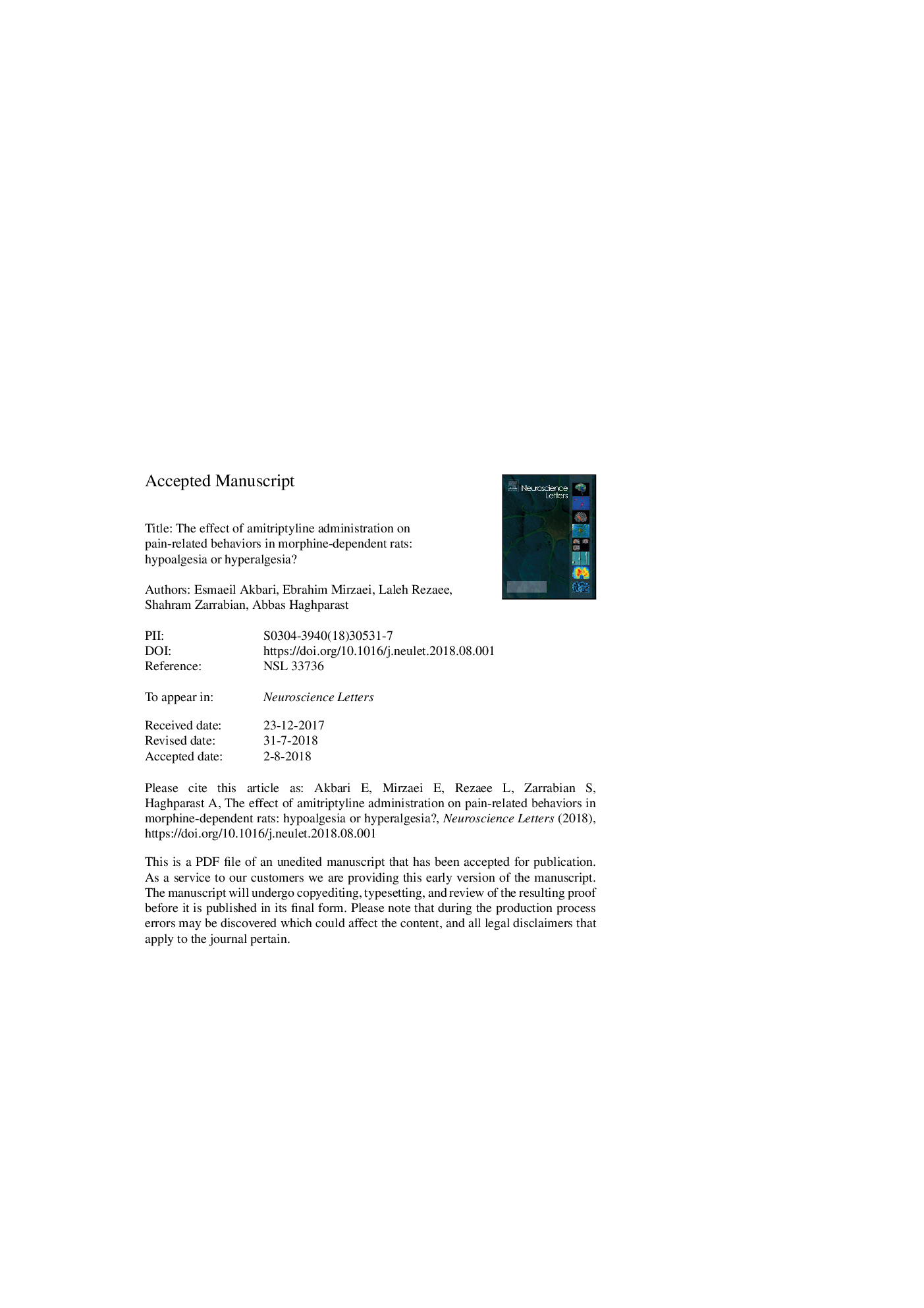| Article ID | Journal | Published Year | Pages | File Type |
|---|---|---|---|---|
| 8841386 | Neuroscience Letters | 2018 | 23 Pages |
Abstract
Pain control in opioid-dependent individuals is a clinical complication. The present study investigated the effects of different doses of amitriptyline in the three stages of the formalin test in morphine-dependent rats (MDRs). Morphine dependency was induced using the oral method, and then, amitriptyline-induced antinociceptive effects were measured at 4 doses (2.5, 5, 10, and 20âmg/kg) and compared with the control group in a formalin-based model of pain. There was no observed antinociceptive effect in the MDRs and morphine-naïve rats (MNRs) in phase I. In the interphase, amitriptyline induced pain suppression at doses of 5 and 20âmg/kg. In phase II, at doses of 5, 10, and 20âmg/kg, the hypoalgesic effect on pain-related behaviors was seen in the MNRs. In MDRs, amitriptyline at doses of 2.5 and 5âmg/kg caused the hyperalgesic effect, whereas at 10 and 20âmg/kg doses, it induced a hypoalgesic effect. A significant attenuation was observed in the latency to fall from the accelerating rotarod at doses of 10 and 20âmg/kg in the MDRs, and at a dose of 20âmg/kg in the MNRs. Data showed that amitriptyline dose-dependently induced paradoxical hypo- and hyper-algesic effects in MDRs.
Related Topics
Life Sciences
Neuroscience
Neuroscience (General)
Authors
Esmaeil Akbari, Ebrahim Mirzaei, Laleh Rezaee, Shahram Zarrabian, Abbas Haghparast,
